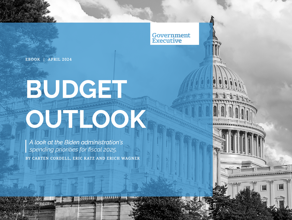Federal employees are picking up the pace on one career path that makes managers cringe-retirement. According to the Office of Personnel Management's five-year projection, 18.8 percent of the full-time federal workforce, a hard number of 281,000 people, will hang it up between 2002 and 2006, and at a rate of nearly 4 percent faster than folks exited over previous five-year periods.
Those in the trenches know how this impending departure can affect enthusiasm for the job at hand. Just ask Rosslyn Kleeman, who chairs the Coalition for Effective Change. During her federal career, her supervisor kept a calendar in his office to cross off his remaining days. "We have a lot of mid-level-and-up people who are close to retirement and going through the motions," she says.
Rosalene Glickman certainly sees it during her work as a motivational consultant with the Internal Revenue Service, Army and the Treasury Department's complaints center. "I have noticed that people rationalize poor performance by saying, 'I'll be retiring soon.' So they don't do their best," says Glickman, author of Optimal Thinking; How to Be Your Best Self (Wiley, 2002), and president of The World Academy of Personal Development in Los Angeles.
But she knows a secret: Baby boomers are receptive to internal motivation. "If you want to have the best retirement, practice now being your best on the job," she dangles before these workers. She asks them to write down five optimal questions to start the day:
- What is ultimately important to me?
- What are my important goals today?
- What actions will be most beneficial for my self-confidence and self-respect?
- What is the most productive way to achieve these tasks?
- How can I be at my best right now?
The action is as simple as having the employee tape these questions to his desk. "It's a challenge that revitalizes them, and they all respond to it," Glickman says. She notes that this exercise is really about self-motivation.
When Reginald Wells joined the Social Security Administration in 2002 as its chief human capital officer and deputy commissioner, he couldn't walk down the halls without agency veterans passionately relaying stories from their days in the field. He encourages this storytelling as a way of giving more experienced workers a valued status. "I want them to inspire a new generation of people on the front lines," he says. "Over the course of their careers, these people are keepers of the culture, essentially."
The generation gap can cause headaches for leaders such as Darryl Perkinson, supervisory training specialist at Norfolk Naval Shipyard in Virginia and national vice president for the Federal Managers Association. The values of baby boomers and Generation Xers don't always mesh.
Mentoring has smoothed these waters and kept his older workers engaged. "Those approaching retirement view the challenge of passing their institutional knowledge to the younger workers as their way of leaving a legacy," Perkinson says. He credits this attitude for the quick advancement of apprenticeship program graduates into the fields of management, inspection and training.
According to OPM, the average federal employee retires at 58 after 25 years of service. Supervisors with employees in this window should have a straightforward talk about future plans, says Kleeman. Once you discover their timetable, hand them a project with a deadline that corresponds to their planned exit date.
She also recommends that managers connect long-term workers to volunteer opportunities that make the most of their expertise. Employee committees often liven up a wilting attention span. And Title 5 of the Code of Federal Regulations, Part 251 encourages agencies to follow a liberal policy in granting employees time off to work with associations relevant to their work.


